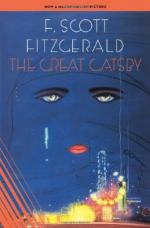|
This section contains 4,747 words (approx. 16 pages at 300 words per page) |

|
SOURCE: “Christian Myth and Naturalistic Deity: The Great Gatsby,” in Renascence, Vol. XIV, No. 2, Winter, 1962, pp. 80-9.
In the following excerpt, Guerin examines Fitzgerald's The Great Gatsby, focusing on the novel's two patterns of symbolism wherein Fitzgerald contrasts both the East with West and Christian myth with naturalistic deity.
Although two patterns of symbolism carry the major portion of the theme of F. Scott Fitzgerald's The Great Gatsby, only one has received adequate attention. That pattern contrasts the American East with the West and Mid-West; the other concerns a grail quest in a waste land, over which presides a deity-like figure. Although the two patterns are closely related, each can be treated separately. Critics such as Arthur Mizener and Milton Hindus have already considered the East-West motif—understandably, for Nick Carraway frequently compares, often explicitly, the two areas. East Egg, Long Island, where the Buchanans live, and West...
|
This section contains 4,747 words (approx. 16 pages at 300 words per page) |

|


